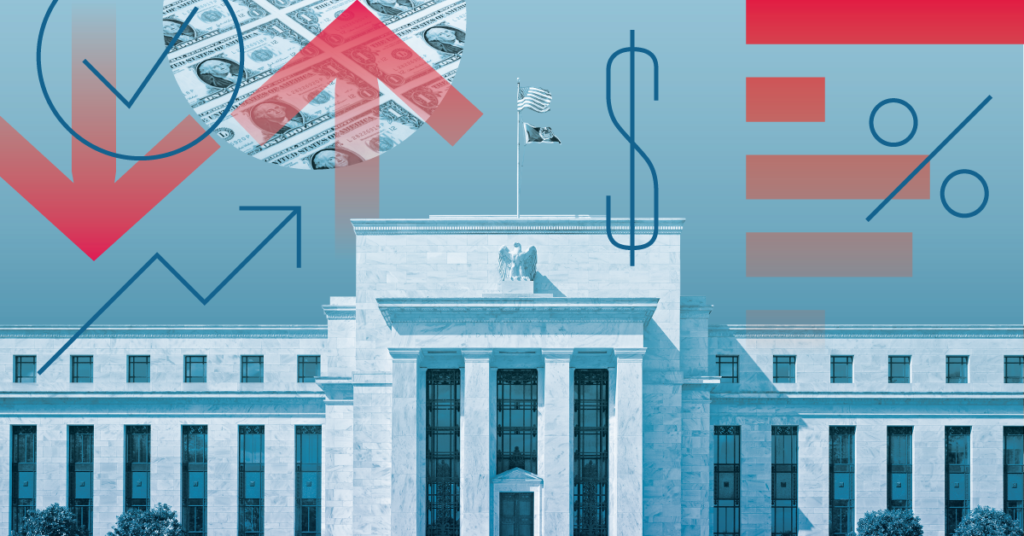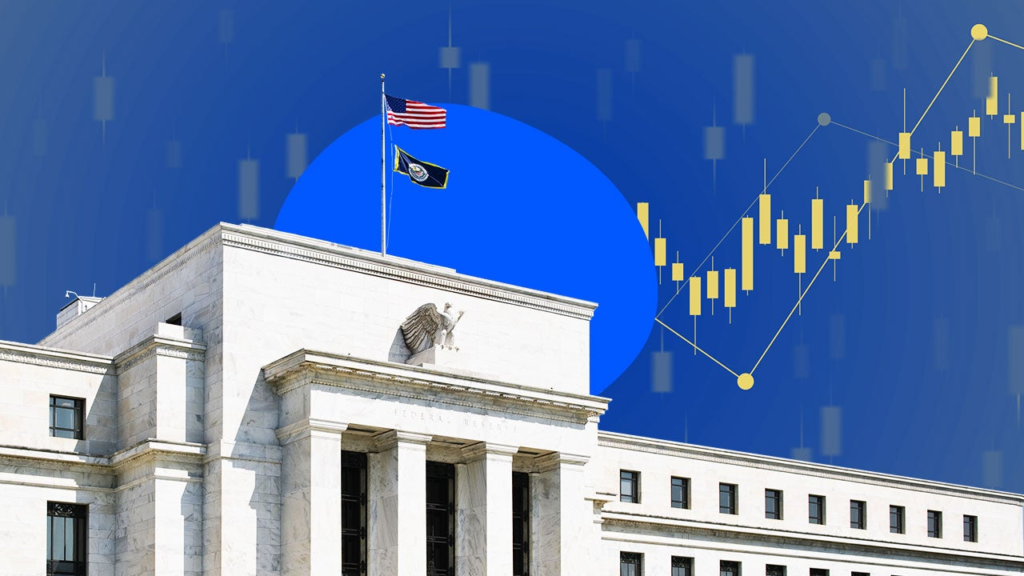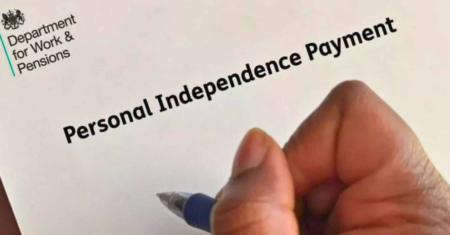
As inflation stubbornly hovers above the Federal Reserve’s 2% target and geopolitical tensions flare, the Fed’s decision to hold the federal funds rate at 4.25–4.50% in its June 17–18, 2025 meeting became a headline event—capturing the attention of markets, policymakers, and everyday consumers alike .
That pause marked the fourth straight meeting without a rate change, signaling both restraint and caution from the Fed m.economictimes.com. While inflation—measured by CPI—has eased closer to target, it remains elevated; core PCE is projected to peak at 3.1% in 2025, exceeding goals and complicating efforts to ease policy too quickly finance.yahoo.com+15theguardian.com+15wsj.com+15.
At the same time, U.S. economic growth is waning. The Fed revised its GDP forecast from 1.7% down to 1.4% for the year, and unemployment is expected to edge up to 4.5%—signs of a labor market slowing yet still solid . Striking this balance—between containing inflation and preventing recession—lies at the heart of current policy challenges.

Adding to the complexity are aggressive trade measures introduced by former President Trump, including sweeping tariffs on steel, aluminum, automotive goods, and even a universal 10% “reciprocal” tariff on imports, raising average rates from 2.5% to a startling 27% at times federalreserve.gov+15wsj.com+15businessinsider.com+15en.wikipedia.org+1en.wikipedia.org+1. While aimed at protecting domestic industries, these tariffs risk stoking inflation by pushing up import prices, prompting Fed Chair Jerome Powell to explicitly call out their potential to upend price stability politico.com+1wsj.com+1.
Against this backdrop, the Fed’s dot plot projections—seeing two quarter-point cuts in 2025 but fewer moves thereafter—reflect deep uncertainty. Indeed, seven of 19 policymakers even foresee no cuts at all, so they’re approaching future easing with caution kiplinger.com+3politico.com+3reuters.com+3.
This high-stakes scenario—caught between elevated inflation, cooling growth, trade policy turbulence, and mounting political pressure—makes June’s Fed holding pattern a pivotal moment. Will data in the coming months tip the scale toward rate cuts as markets hope? Or will rising prices and external shocks compel the Fed to keep monetary conditions tight?
1. What Is the Federal Funds Rate?
The federal funds rate is the interest rate at which U.S. depository institutions—primarily commercial banks and credit unions—lend reserve balances to one another overnight, without collateral newyorkfed.org+10investopedia.com+10forbes.com+10. These reserves are funds that banks hold at Federal Reserve banks to satisfy legal requirements and manage liquidity.
- Target vs. Effective Rate:
- The FOMC sets a target range (e.g., 4.25%–4.50%).
- The effective federal funds rate (EFFR) is the actual volume-weighted median of rates at which overnight transactions occur en.wikipedia.org+1fred.stlouisfed.org+1nerdwallet.com+1investopedia.com+1newyorkfed.org.
2. Why It Matters
a. Benchmarks for the Economy
Though it represents interbank lending, the federal funds rate fundamentally shapes:
- Short‑term loan rates, such as credit card APRs, auto loans, and adjustable-rate mortgages
- Prime rate—the benchmark used by banks to set rates for their best clients investopedia.com+15forbes.com+15investopedia.com+15
- Longer-term rates, since yields on Treasury securities and mortgages often align with changing short-term policy
b. Monetary Policy Tool
Through this rate, the Fed executes its dual mandate:
- Control inflation
- Foster maximum employment
Adjusting this rate helps manage economic activity:
- Raising rates → discourages borrowing, cools spending and price pressures
- Lowering rates → encourages borrowing, supports growth and job creation thetimes.co.uk+15investopedia.com+15forbes.com+15
3. How the Fed Influences It
Although banks negotiate the actual rate, the Fed steers it toward its target range using:
- Interest on Reserve Balances (IORB) – Pays banks interest on their deposits with the Fed, discouraging rates below this floor chicagofed.org+5en.wikipedia.org+5investopedia.com+5
- Overnight Reverse Repurchase Agreements (ON RRP) – Offers a floor for non-bank financial institutions en.wikipedia.org
- Open Market Operations – Buying or selling government securities to adjust liquidity en.wikipedia.org
- Discount Window – A ceiling on rates via short-term loans to banks federalreserveeducation.org
4. Who Decides the Rate?
Policy decisions are made by the Federal Open Market Committee (FOMC), which comprises:
- Seven members of the Fed’s Board of Governors
- Five regional Federal Reserve Bank presidents (the New York Fed has a permanent vote; others rotate)
The FOMC meets eight times annually, setting a target rate band each time newyorkfed.org+8investopedia.com+8reuters.com+8.
5. Real-World Impacts
Consumers & Businesses
- Borrowers: Higher fed rates mean more expensive home, auto, and business loans
- Savers & investors: Can earn more from savings accounts, CDs, and money-market funds crossfirstbank.com
Financial Markets & Economy
- Higher rates can slow business investment and hiring
- Lower rates can boost economic growth but risk igniting inflation if overused reuters.com+1investopedia.com+1investopedia.com
Global Reach
- Influences global currency values, capital flows, and impacts other central banks that often track Fed decisions
6. Historical Perspective
- 1980s: Rates peaked around 20% to tame runaway inflation
- 2008 financial crisis: Dropped to nearly 0%
- Pandemic era: Slashed again to 0–0.25%; then rapidly raised from 2022 to early 2024 to around 5.25–5.5% to battle inflation investopedia.com
- 2024–25: Moderately lowered to 4.25–4.50%
Quick Takeaways
- Federal funds rate = interest banks charge each other overnight
- FOMC target range guides this rate; the effective rate can vary slightly
- It underpins borrowing costs, savings yields, and economic momentum
- The Fed uses this rate as its primary tool to balance inflation and employment
2. June 17–18, 2025 Meeting: Why the Fed Stayed Pat
Meeting Snapshot
During the Federal Reserve’s June 17–18, 2025 policy meeting, the FOMC voted unanimously to hold the federal funds rate steady at 4.25%–4.50%, marking the fourth consecutive pause since December 2024 cbsnews.comreuters.com. Chair Jerome Powell and his colleagues emphasized a cautious, data-dependent approach amid persistent economic uncertainties.

Key Reasons Behind the Pause
1. Inflation Remains Elevated
- Both headline and core inflation persist above the Fed’s 2% target. May’s CPI rose 2.4% year-over-year, with core CPI at +2.8% and core PCE expected to reach 3.1% by late 2025 reuters.com+10reuters.com+10reuters.com+10.
- Tariff policies — including steel, aluminum, auto, and universal import tariffs — are anticipated to push consumer prices higher later in the year .
2. Slowing Economic Growth
- GDP growth forecasts were lowered from 1.7% to 1.4% for 2025, reflecting softer retail sales, industrial output, and rising global risks .
- Despite slowing, labor market conditions remain resilient, with unemployment around 4.4–4.5% kiplinger.com+1reuters.com+1.
3. Geopolitical and Trade Pressures
- Elevated tariffs and geopolitical instability—particularly in the Middle East—have weighed on business sentiment and consumption, prompting caution reuters.com.
- Powell highlighted that tariffs are beginning to influence consumer prices, and their ongoing impact would factor into future policy decisions theguardian.com.
4. Mixed Inflation Expectations
- Short-term inflation expectations are rising. However, longer-term expectations—derived from market-based measures—remain broadly contained, despite conflicting survey data (e.g., University of Michigan vs. New York Fed) wsj.com+2reuters.com+2reuters.com+2.
- This divergence warranted caution: if long-term expectations unanchored, the Fed’s inflation credibility could be undermined wsj.com+9reuters.com+9reuters.com+9.
The Revised Outlook: Dot Plot & Forward Guidance
- The updated dot plot still forecasts two quarter-point rate cuts in 2025, but the pace slows to only one cut per year in 2026 and 2027 reuters.com+4reuters.com+4reuters.com+4.
- Median projections show inflation staying above target through 2026, while GDP and unemployment moderate to ~1.4% growth and ~4.5% unemployment .
- Powell maintained a “patient, wait-and-see” stance, stating rate decisions depend on future data and clarifying that no cuts will be made prematurely .
Market & Media Response
- Economists and market participants largely expected the hold, pricing in a September cut at the earliest .
- Financial markets reacted calmly: Treasury yields stabilized, and equity indices saw modest gains, notably a +107-point jump in the Dow post-announcement .
- Analysts emphasized Fed’s shift to a more hawkish tone, adjusting future cut expectations in light of persistent inflation and external risks .
Policy Implication: A Delicate Balance
The Fed’s decision to pause reflects a careful attempt to balance multiple risks:
- Taming inflation sustained by tariffs and geopolitical shocks.
- Avoiding over-tightening, given the economy’s gradual slowdown.
- Keeping credibility intact, amid rising political pressure for rate cuts .
Summary: Why the Fed Paused
| Factor | Impact |
|---|---|
| Elevated inflation + tariffs | Risk renewed price pressures |
| Slower growth | Cautions against over-tightening |
| Anchored long-term inflation expectations | Supports policy patience |
| Geopolitical uncertainty | Boosts need for flexibility |
3. The Dot Plot & Fed’s Forecasts
What Is the “Dot Plot”?
The dot plot is part of the Fed’s Summary of Economic Projections (SEP). It reflects each FOMC member’s projections for the federal funds rate at the end of 2025, 2026, 2027, and in the “longer run.” These projections are represented as dots on a chart, revealing the Fed’s median “path of least resistance”—not a commitment, but an indicator of where rates may head based on current expectations omniekonomi.se+11wolfstreet.com+11kiplinger.com+11advisorperspectives.com.
June 2025 Dot Plot Highlights
2025 Outlook:
- The median projection remains at 3.9%, up from the current policy range (4.25–4.50%) because it forecasts two quarter-point cuts during the year forexlive.com+2reuters.com+2kiplinger.com+2.
- 10 out of 19 FOMC members support at least two cuts; 2 expect only one, while 7 see zero cuts in 2025—up from four in March, signaling growing hesitation federalreserve.gov+14ainvest.com+14wolfstreet.com+14.
2026 & 2027 Outlook:
- Rate easing slows: both years see just one quarter-point cut, with medians of 3.6% (2026) and 3.4% (2027)—higher than March projections ainvest.com+1fxstreet.com+1.
- The longer-run median holds at 3.0%, aligning with March outcomes fxstreet.com+4wolfstreet.com+4forexlive.com+4.
Economic Projections Behind the Dots
The dot plot comes alongside forecasts for key economic indicators:
| Metric | 2025 Forecast | Change since March | 2026 Forecast | 2027 Forecast |
|---|---|---|---|---|
| GDP Growth | 1.4% | ↓ from 1.7% | ~1.6% | – |
| Unemployment | 4.5% | ↑ from 4.4% | ~4.5% | – |
| PCE Inflation | 3.0% | ↑ from 2.7% | ~2.4% | ~2.1% |
| Core PCE | 3.1% | ↑ from 2.8% | ~2.4% | around 2% |
wsj.com+7fxstreet.com+7ainvest.com+7reuters.com
This signals a shift toward a stagflationary outlook—slowing growth paired with persistent inflation.
Interpretation of Fed’s Forecasts
- Two cuts in 2025 are widely expected, but there’s more internal division—nearly 40% of officials see one or no cuts by year-end wsj.com+3ainvest.com+3ft.com+3.
- Later years signal a slowdown in easing, leaving rates higher than earlier projected.
- Inflation above target into 2026 suggests the Fed is prepared to tolerate slightly higher-for-longer rates reuters.comainvest.com.
Market & Policy Implications
- The September 2025 rate cut remains priced in, but risks of a delay are growing, given mixed signals ft.com+7kiplinger.com+7ainvest.com+7.
- Markets interpret the dot plot as cautiously optimistic—but increasingly uncertain.
- The Fed’s strategy hinges on incoming data—particularly inflation readings and tariff impact—before shifting policy bloomberg.comfred.stlouisfed.org+7ainvest.com+7reuters.com+7.
Key Takeaways
- The dot plot signals room for two cuts in 2025, yet reveals a Fed split and slower pace in 2026–27.
- Economic projections show slower growth and stubborn inflation—supporting continued vigilance.
- Policy translation? The Fed remains data-dependent, balancing inflation control against growth risks, with flexibility toward future easing.
4. Immediate Market Reaction
Stock Market Behaviour
- U.S. equities responded positively but cautiously. Following the Fed’s announcement that interest rates would remain in the 4.25–4.50% range, the Dow Jones jumped approximately 0.3%, while the S&P 500 and Nasdaq gained around 0.3–0.4% investors.com+1wsj.com+1.
- Markets appeared volatile and sensitive, influenced not only by the Fed’s stance but also by geopolitical events—notably tensions in the Middle East—which tempered investor enthusiasm .
Fixed Income & Bond Market
- U.S. Treasury yields fell slightly, especially in the 10-year and 2-year notes, as investors recalibrated expectations for rate cuts—reflecting growing optimism that such cuts could emerge as early as September wsj.com+14reuters.com+14reuters.com+14.
- However, long-duration bonds underperformed amid fading hopes for aggressive cuts in 2026 and 2027, prompting some investors to shift away from longer-term Treasuries reuters.com.
Futures & Market Expectations
- Fed funds futures markets continued pricing in two quarter-point cuts by end‑2025, with roughly a 63% probability of a cut by September—showing consistency with Fed dot plot signals reuters.com+2investors.com+2reuters.com+2.
- Traders displayed low odds for a July cut, signalling confidence that the Fed would wait for more economic clarity reuters.com+4investors.com+4reuters.com+4.
Summary of Market Signals
| Asset Class | Immediate Reaction | Wider Context |
|---|---|---|
| Stocks | +0.3–0.4% gains | Markets viewed the pause as data‑dependent rather than hawkish or dovish |
| Bond Yields | Slight drop in yields | Markets hopeful of September cuts |
| Bond Duration | Long-term bonds sold off | Lower investor confidence in deep future cuts |
| Futures Market | Prices pegged for two cuts by Sep | Aligned with dot plot projections |
Analyst Commentary
- Michael Brown (Pepperstone) labeled the June meeting a “placeholder,” emphasizing that “For the time being we are well positioned to wait to learn more… before considering any adjustments” en.wikipedia.orgfinance.yahoo.com+6reuters.com+6news.bloomberglaw.com+6.
- Peter Cardillo (Spartan Capital) noted markets were unfazed: “The fact that rates remain unchanged is no surprise,” reuters.com+1americanbanker.com+1
- Insight Investment’s Harvey Bradley echoed that markets were watching the dot plot for signs on rate timing, especially amid Middle East risks timesofindia.indiatimes.com+2reuters.com+2marketwatch.com+2.
Bottom Line
The Fed’s decision to stand pat in June sparked a balanced market response: equities rose modestly, yields dipped slightly, and rate-cut expectations lingered around September—but not sooner. Investors interpreted the move as a deliberate pause rather than a pivot, with eyes fixed on upcoming inflation data, tariff developments, and geo‑political signals.
5. Powell’s Data-Driven Approach
“Data Dependent, Not Dogmatic”
At the post‑meeting press conference on June 18, 2025, Jerome Powell repeatedly emphasized that the Federal Reserve is firmly “data dependent”:
“No one holds these… rate paths with a great deal of conviction, and everyone would agree that they’re all going to be data dependent.” reuters.com+15reuters.com+15wsj.com+15
This statement reinforced that FOMC projections—like those seen in the dot plot—are not rigid commitments but conditional forecasts. Powell stressed that future rate decisions hinge on evolving conditions, particularly the trajectory of inflation and labor market data.
Inflation Remains Central
Powell highlighted that tariffs from recent trade policy actions are contributing to goods price increases:
“We expect a meaningful amount of inflation to arrive in coming months, and we have to take that into account.” reuters.com+13reuters.com+13washingtonpost.com+13reuters.com
He referenced early signals—such as higher prices for electronics—as evidence that tariff-related pressures are materializing and might spread across the broader economy.

Caution on the Dot Plot
Powell cautioned against overinterpreting the forecast for two rate cuts in 2025:
“There is little conviction behind these projections… they’re all going to be data dependent.” kiplinger.com+13reuters.com+13reuters.com+13reuters.com+10apnews.com+10wsj.com+10
He made it clear that the Fed’s stance and potential rate moves will evolve over time, not follow preset paths.
Balancing Dual Mandates
The Fed’s decisions remain focused on its dual mandate:
- Price stability: Bringing inflation sustainably toward the 2% target
- Maximum employment: Monitoring labor markets closely
Powell emphasized this balancing act:
“Our decisions will be based on the totality of the data … inflation moving sustainably toward 2%, or weakness in the labor market that would call for a response.” apnews.com+2m.economictimes.com+2reuters.com+2federalreserve.gov+2federalreserve.gov+2m.economictimes.com+2federalreserve.gov
This means both inflation and employment trends are watched in tandem before altering policy.
Patience Is Preferred
Powell echoed what regional Fed leaders have regularly noted—that caution is wise while uncertainties persist:
“We are aware of political opinions, but our decisions are driven by data, not deadlines.” federalreserve.gov+12m.economictimes.com+12reuters.com+12
Analysts also cited him affirming a “wait‑and‑see” approach due to tariff uncertainties, global developments, and mixed inflation signals. Rate cuts are not forthcoming until Powell feels sufficient confidence that inflation is cooling sustainably federalreserve.gov.
Key Takeaways
- FOMC projections are forecasts, not commitments—they hinge on fresh data.
- Tariff-driven price pressures are real and factored into policy calculus.
- Powell’s Fed remains highly cautious, prioritizing reliable trends[—not politics.
- Rate decisions will be based on total data signals, weighing both inflation and employment.
Why This Matters
Powell’s approach underscores that the Fed’s path forward will be adaptive, not predetermined. Households, businesses, and investors should monitor core inflation readings and labor data—especially if thinking about taking on adjustable-rate debt or anticipating shifts in borrowing costs.
Let me know if you’d like to dive into specific inflation components, labor market indicators, or global factors that Powell may be watching.
6. Political Tensions
Trump’s Public Criticism
Former President Donald Trump has launched repeated, sharp attacks on Fed Chair Jerome Powell in the lead-up to and following the June 18 decision—calling him “stupid,” a “numbskull,” and accusing him of poorly managing monetary policy:
“We have a stupid person, frankly, at the Fed… He probably won’t cut today… He’s not a smart person.” marketwatch.com+12foxbusiness.com+12reuters.com+12
Trump has criticized Powell for delaying rate cuts and argued that such inaction cost the U.S. up to $800 billion in economic output. He has repeatedly insisted that rates should be about two percentage points lower than they are today .
Threats to Replace Powell Early
Trump has signaled his intent to nominate a successor well before Powell’s term ends in May 2026, introducing the concept of a premature “shadow chair.” Candidates floated include figures like Kevin Hassett, Kevin Warsh, Judy Shelton, and Scott Bessent—moves that have concerned investors about Fed independence and potential market instability en.wikipedia.org+6reuters.com+6marketwatch.com+6.
The Fed’s Independence Under Pressure
Analysts warn these political maneuvers could undermine central bank credibility. A Reuters analysis notes:
“Trump pressure on the Fed may be backfiring… acting under perceived political duress could damage the Fed’s credibility.” reuters.comreuters.com+1m.economictimes.com+1
The Fed leadership has responded by reaffirming that policy decisions will remain independent, driven strictly by data—not politics biz.chosun.com+11elpais.com+11reuters.com+11.
Why It Matters
This isn’t just headline news—it raises urgent questions about how vulnerable U.S. monetary policy could become to political influence. An independent central bank is critical for anchoring inflation expectations, building market trust, and maintaining economic stability. Eroding that independence could unsettle bond markets, destabilize currency valuations, and create inflationary uncertainty .
Summary Table
| Trump’s Actions | Impact on Fed & Markets |
|---|---|
| Publicly disparages Powell | Risks eroding public trust in Fed independence |
| Pushing early replacement | Could create “shadow” leadership and signal policy shifts |
| Demanding rate cuts | Increases tension around Fed’s data-driven mandate |
| Market analysts warn | Credibility and inflation anchoring at risk |
Bottom Line
Political interference in the Federal Reserve—especially under the influence of former president Trump—is intensifying. While Powell has reaffirmed the Fed’s commitment to independent, data-focused policymaking, the threat of premature leadership changes and public discord raises real concerns about future market confidence and the effectiveness of U.S. monetary policy.
7. Implications for Households & Investors
A. Savers: A Rare Silver Lining
- High interest rates in the 4.25–4.50% range mean significantly better returns on savings accounts, money-market funds, and certificates of deposit (CDs). Although returns aren’t at their peak from a year ago, yields remain notably strong marketwatch.com+5apnews.com+5marketwatch.com+5en.wikipedia.org+4mortgageprocessor.org+4nypost.com+4.
- Financial advisers recommend that savers lock in these higher rates while they last, and build up emergency funds to buffer against unexpected expenses cbsnews.com.
B. Borrowers: Credit Still Costly
- Consumer borrowing continues to feel the Fed’s influence:
- 30-year fixed mortgage rates hover near 7%, keeping homeownership costs high finance.yahoo.com+15cbsnews.com+15mortgageprocessor.org+15.
- Credit card APRs remain elevated—over 20%—draining household budgets cbsnews.com.
- Auto-loan rates, though slightly eased, have not dropped enough to significantly boost car purchasing newyorkfed.org+9apnews.com+9reuters.com+9.
- With no immediate cuts expected, borrowers must deal with high rates for credit cards, mortgages, and business loans through at least mid-2025.
C. Household Financial Health
- Rising jobless claims (highest since August 2023) and a slump in housing starts point to early signs of stress—precisely what the Fed is monitoring marketwatch.com+10apnews.com+10apnews.com+10marketwatch.com+4investors.com+4businessinsider.com+4.
- Despite these headwinds, many families report being better prepared: emergency savings and retirement readiness remain stable compared to 2023 federalreserve.gov.
D. Investors: Mixed Opportunities & Risks
Equity Markets:
- Stocks responded positively to the Fed pause, with both the S&P 500 and Dow posting modest gains investors.com+4apnews.com+4nypost.com+4.
- Investors interpret the pause and dot plot as signs of potential easing—but remain cautious in the absence of confirming data.
Bond Market:
- Treasury yields softened slightly as market expectations for September rate cuts solidified—though volatility persists due to inflation concerns and geopolitical uncertainty apnews.comen.wikipedia.org+15cbsnews.com+15apnews.com+15.
- Long-duration bonds lagged, reflecting tempered confidence in aggressive easing projections for 2026 and 2027 .
- The surge in government debt issuance and elevated yields (10-year yield at ~4.4%) continues to push up mortgage and loan costs, while offering better income opportunities for fixed-income investors marketwatch.com.
E. Strategic Takeaways
| Group | Opportunities | Cautions |
|---|---|---|
| Savers | Higher returns on deposit accounts & CDs | Rates may fall mid-to-late 2025 |
| Borrowers | No sudden rise in rates | Sustained high cost for loans and mortgages |
| Equity Investors | Gains from pause in tightening | Watch upcoming inflation and jobs data |
| Bond Investors | Attractive short-term yield | Long-term outlook uncertain |
| Households | Reduced financial fragility | Labor/housing market headwinds may grow |
Final Thoughts
For households, the Fed’s June hold means continued benefits for savers but persistent challenges for borrowers. Investors will need to balance equity gains with bond market risks, staying attuned to incoming data and geopolitical signals.
Let me know if you’d like a personalized breakdown—e.g., how adjustable-rate mortgages or specific savings vehicles might perform under this policy regime!
About the Author






0 Comments